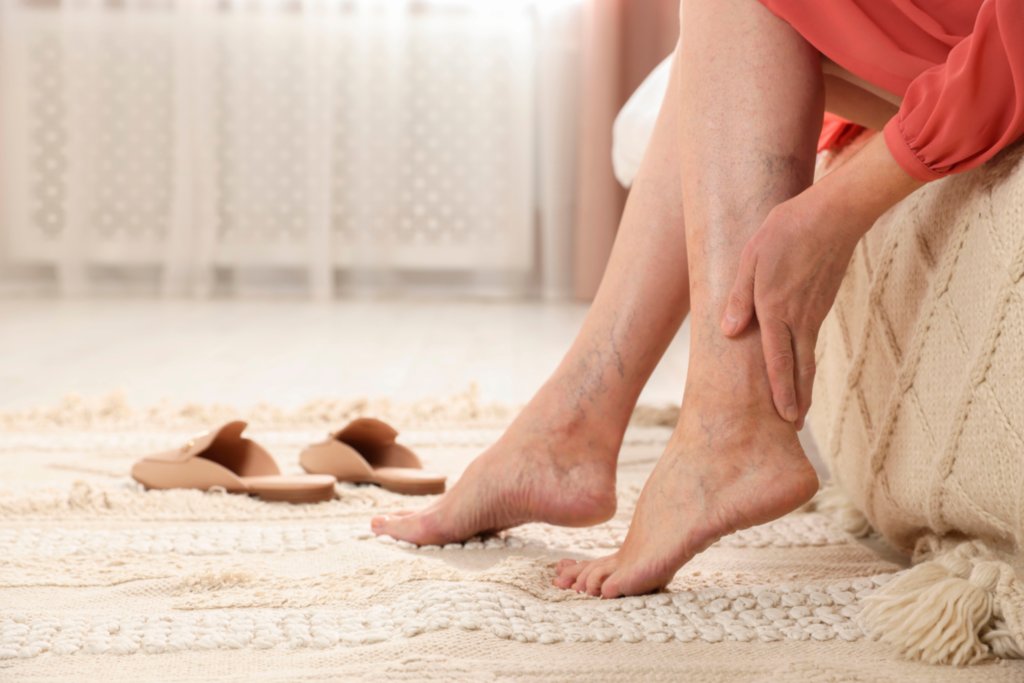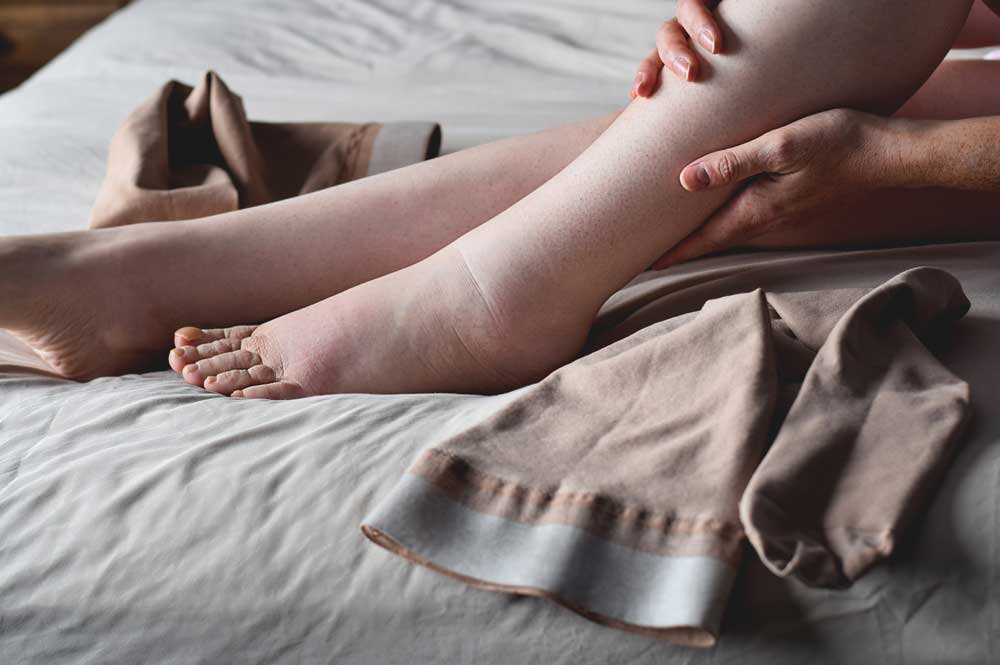The Risk of Blood Clots in the Legs and Lungs
Blood clots that form in your leg veins, come in two forms: superficial vein thrombosis (SVT) and/or deep vein thrombosis (DVT). DVTs and to a lesser extent SVTs hinder healthy blood flow and are potentially life threatening if the clots break free and travel to your lungs. A clot in your leg that makes its way to your lungs is known as a pulmonary embolism (PE). A PE can hinder breathing, leading to extreme chest pain and death.
About 50% of DVT/SVT are silent and not associated with any symptoms. When symptomatic, an SVT or DVT can cause leg pain, swelling and discomfort and, in some cases they can affect walking and normal movement.
But what causes blood clots like these and, more importantly, how can you prevent them and make sure you receive diagnosis and treatment if they occur?
What Causes Blood Clots in the Legs?
We already know that clots in the lungs most often travel from the legs, but what causes blood clots to form in the legs in the first place?
There are many known and suspected causes for blood clots, and there are also high risk populations who are more likely to develop a DVT or SVT.
A triad of factors that are known to increase your risk of developing a blood clot include: slowed venous blood flow, hypercoagulable blood and injury to the vein. When circulation is slowed, the risk of blood cells clumping together to form a clot increases. Genetic conditions, medications, and hormonal changes which can increase the blood’s clotting factors. In some cases, you could be at an increased risk and not know it.
Are You High Risk for Developing DVT or SVT?
We know that there are several risk factors for developing a DVT or SVT. If you fall into one of more of these categories, you’re more likely to develop blood clots:
- Age 65+: Aging can lead to weakening veins and reduced blood circulation. If you’re less active, your likelihood of blood clots increases as well, whether due to advanced age, injury, or surgery.
- Women: Most cases of venous disease and blood clots occur in women, often due to hormones and weight gain in pregnancy or birth control pills and other hormone therapies. If you also wear high heels and other clothing which can restrict healthy blood circulation, you may be increasing your risk for venous disease and blood clots
- Injury and surgery recovery: If you’re inactive for a long period of time because of an injury and/or surgery, your risk of developing blood clots goes up. The less active you are, the harder your veins have to work to maintain a healthy circulation, leading to varicose veins and blood clots.
- Lifestyle and occupational risks: If you work at a desk, on your feet all day without much movement, or you live a more sedentary lifestyle, your risk for developing blood clots goes up due to hindered circulation.
- Hormone therapies: Birth control and testosterone replacement therapy are both seen to increase blood clots, so it’s important to be under the care of a board-certified physician when using anything which may change your hormones, even if you’re trying to do it “naturally”.
- Overweight or obese: If you are overweight or obese, this can negatively impact healthy circulation and lead to blood clots and varicose veins.
- Family history: If Grandma was treated for a PE, make sure your doctors know about it. If your sister developed a DVT while taking birth control, you should also notify your doctor. Allow your physicians to evaluate the risk based on your family history; this will ensure your care is managed appropriately for your risk and needs.
Do the above risks mean you will get a blood clot? Absolutely not! However, understanding your risk will help you make choices to prevent, evaluate, and treat more quickly, enhancing your quality and duration of life.
What about COVID-19 and Blood Clots?
COVID-19 is known to lead to blood clots, though these clots are caused by an immune response to the infection. We wrote an in-depth article about this last year discussing the link between severe coronavirus infection and DVT, though as epidemiologists learn more about this novel virus, the more we understand the risks we can prevent serious complications.
Additionally, the CDC and FDA recently evaluated COVID-19 vaccines and what causes blood clots with Johnson and Johnson and AstraZeneca. What we do know is that cases of clots are extremely rare with these vaccines. We also know that the blood clots aren’t formed in the legs but in the brain, a condition known as Cerebral Venous Sinus Thrombosis (CVST) and in other organs. These incidents have been extremely rare, and it’s important to speak with your primary care physician if you are unsure which COVID-19 vaccine is right for you.
Preventing, Diagnosing, and Treating Blood Clots
At Vein Specialists of the South, we take a holistic approach to vein care, which includes a combination of:
- Vein evaluation and diagnosis
- Lifestyle changes
- Conservative care
- Medical treatment
Your personal risk factors and what we discover during your vein evaluation will inform the steps we take to prevent and treat venous disease and blood clots.
If we discover a blood clot during our evaluation, we will initiate a treatment plan for the clot which usually includes a blood thinner to prevent clot progression. If we do not discover a blood clot, we will work with you to prevent the development of clots through recommended lifestyle changes and conservative care. If you also have varicose veins, we will work with you to treat those using lifestyle changes, conservative care, and treatments.









